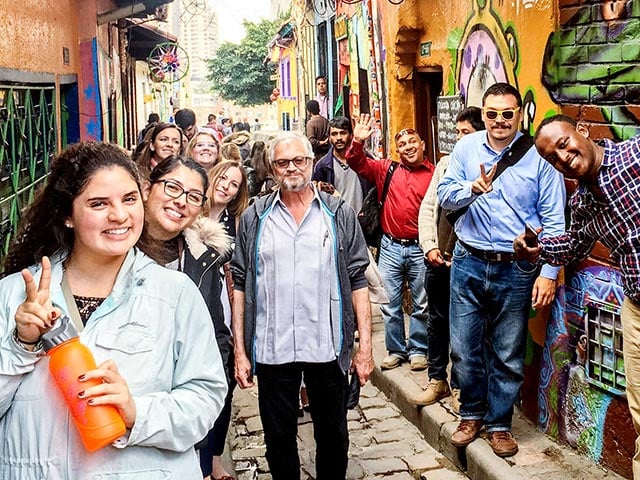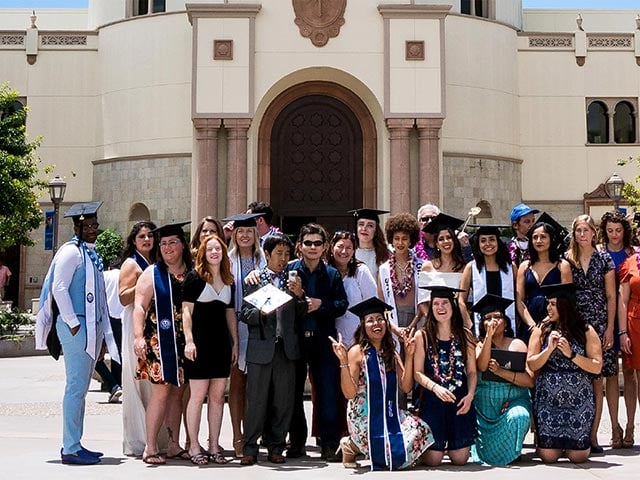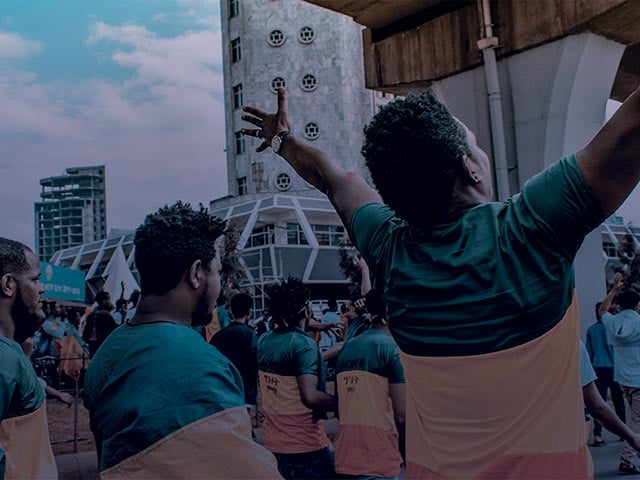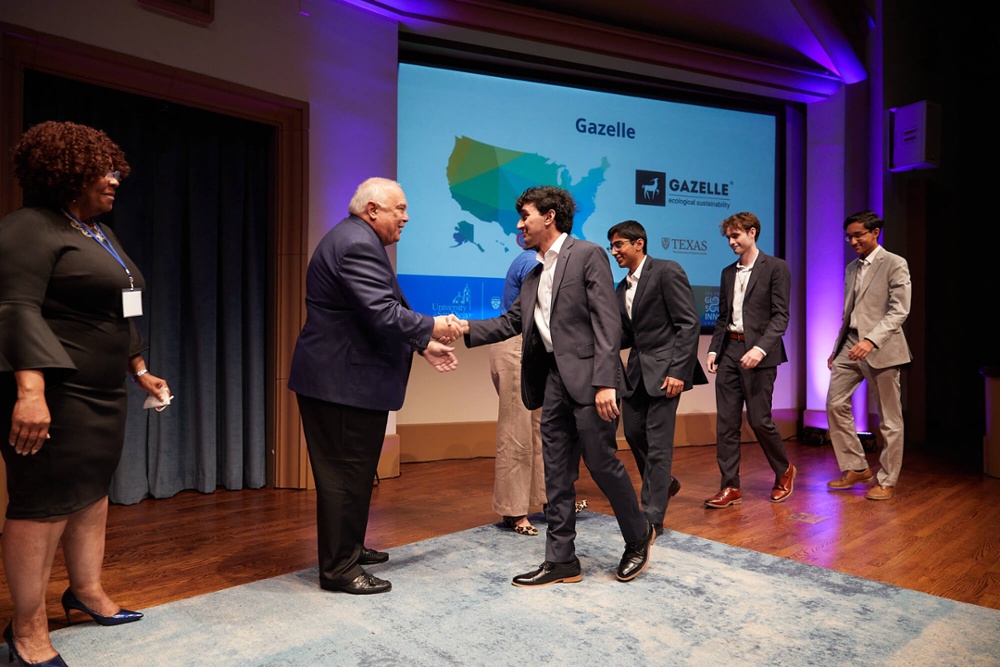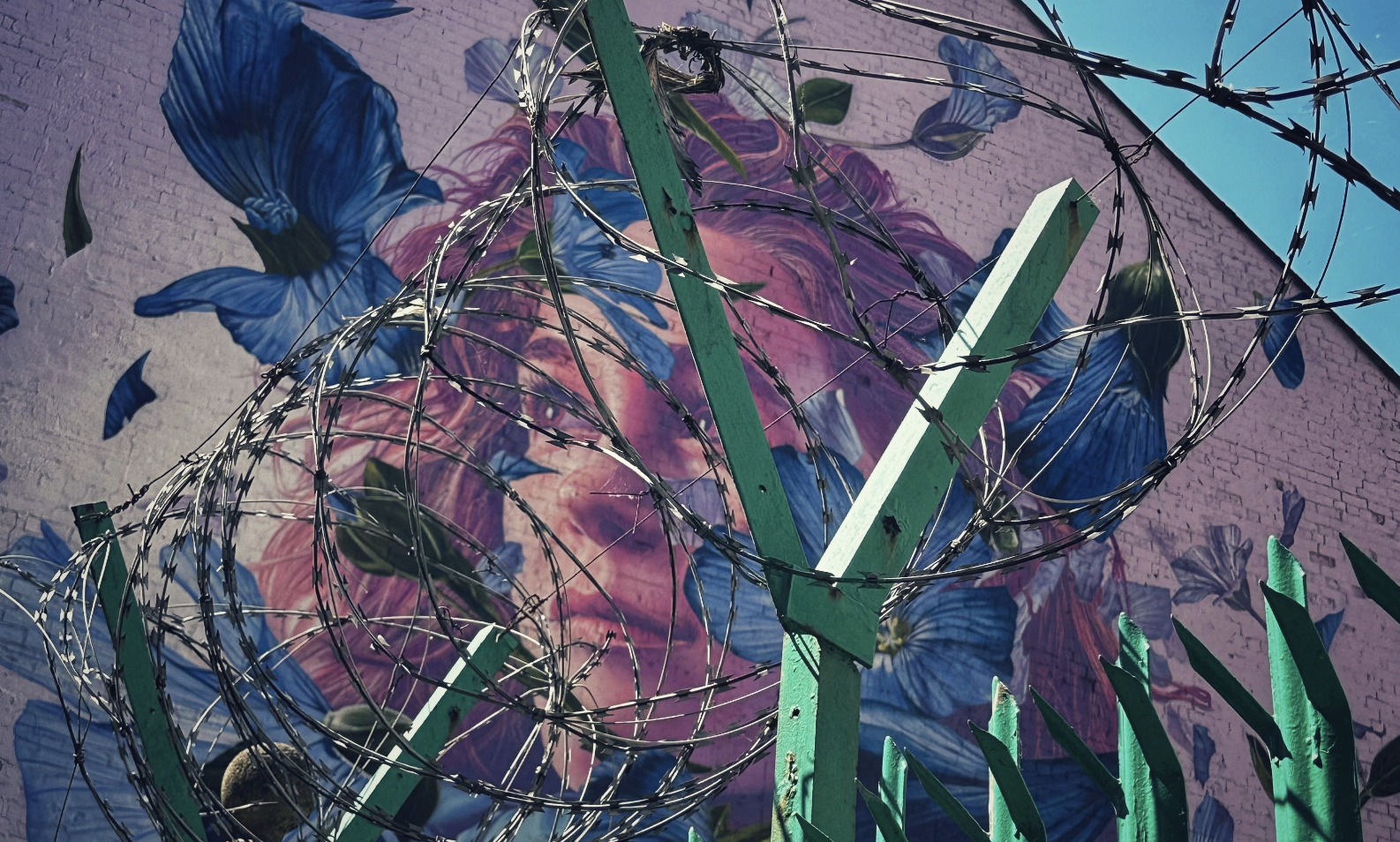The following blog post was written by Rosie Ainza, a student at the Kroc School, who attended the Northern Ireland practicum course in Belfast.
Driving past the verdant fields as I approached Belfast, I was struck with the same heavy sense of uninvited voyeurism I feel when visiting places that have been through conflict. Rwanda, Cambodia, Kenya, Laos, and now Northern Ireland. As part of a Peace Studies program, I grappled with this internal unease. The aim of this practicum was not to highlight our role as tourists or bystanders but as conflict resolvers and facilitators. However, we would still be moving as a group of outsiders- through the streets, past places that had been bombed, and through institutions that have served as places of harm or healing, and sometimes both.
Upon arriving in Belfast by bus, I dropped my bags at our hotel and wandered into the nearest pub, pulling up a stool next to a young man sitting at the bar. When he asked me the reason for my visit, I paused for a moment before answering. I didn't want to say that I'd come to his town to study their Troubles, come to take notes on their conflict like a pathologist when looking at cancerous cells through a microscope. So I summed up this practicum the best I could and told him that I’d come to Northern Ireland to listen. That night we chatted about my home in Alaska, about politics at Stormont, about the rain, and about our parents. Others joined in and by the end of my first evening in Belfast, I had made some new friends.
.jpeg?width=4032&height=3024&name=IMG_2578%20(1).jpeg)
Over the course of the week, our scheduled class meetings varied greatly- from playing at a circus school, to learning about stories of justice and injustice from peace practitioners, to studying colorful murals dotted throughout the brick and concrete of the city. Each place, each activity, each person we were introduced to was curated to form a story of resilience and hope. We learned from both sides of the Peace Walls as well as from people who were around during the Troubles and those who grew up after the Peace Agreement in ‘98. During the week, many of us in the program began to talk more about the similarities we saw in our own country in the United States. Two bitterly divided sides, emerging from different ideologies. What it means to be “free” and how far one is willing to go to fight for that, no matter the cost. No matter the death. .jpeg?width=616&height=821&name=IMG_2393%20(1).jpeg)
If you take the geographical size of Northern Ireland, it compares roughly to the state of Indiana. The population of Northern Ireland throughout the course of the Troubles remained at just over 1.5 million, roughly equal to Philadelphia and just over that of San Diego today. To study the Troubles in terms of scale, it's baffling to think of the conflict on a larger scale if it were to have happened in the United States. Yet, in our country, we are dealing with politically and ideologically motivated mass shootings on a near weekly basis. The racially motivated acts of violence by the hands of police and the subsequent protests in response also feel similar as much as they are different. The makeup of our states, rural and inland vs. more densely populated or coastal, appear more like the neighborhoods separated by the massive barbed wire walls that cut through Belfast. There is an element of Freud’s Das Unheimliche- that uncanny feeling of some distressing history repeating itself. More than all of this, however, it feels like in the United States the worst is yet to come.
As we moved into the latter part of our practicum, Professor Fryer took us north, out of the city, to Corrymeela. This center for peace and reconciliation was begun in 1965. In the morning of our first day at Corrymeela, we met with Paul Hutchinson. As part of our prerequisite readings, we were gifted the opportunity to read Paul’s book Between the Bells in which he collected a series of short stories that view reconciliation not through the macro lens of policy and formal Peace Agreements but, rather, through shared day-to-day knowledge. Paul's conversation, like his book, focused on that soft work which remains so important yet is so often overlooked. At the core of day-to-day life most of us want the same things- food and shelter for our families, a healthy and safe environment, a happy life.
.jpeg?width=3024&height=4032&name=IMG_3509%20(1).jpeg)
At first, I was reluctant to compare and contrast Northern Ireland with the United States. We have different history, different cultures, different rulers. But, the more I shared story with locals, the more I gave in to bringing my experience into the conversation. Nearly each night I would meet my new friends from the pub and talk about the things I'd learned that day. Each response served as a valuable footnote to the day’s education. There is still a makeshift bomb shelter in one friend’s house. One man I met had lost his uncle in a bombing and, later, his nephew to suicide many years after the Peace Agreement was signed. Even the quieter responses spoke to the texture of conflict, like the subtle weariness of someone taking your photograph or sitting with your back to the door.
.jpeg?width=3024&height=4032&name=IMG_2439%20(1).jpeg)
In my community of Lingit Aaní in Alaska, oral tradition is a vital form of shared history. For a millennia the Tlingit have passed down stories and ways-of-knowing through storytelling. The opportunity to have nightly conversations with locals in Belfast was a gift. To be able to add this knowledge to what I learned in the program was so incredibly valuable. What I felt at the end of our program, over all else, is that the only way to overcome conflict, no matter where we are, is to talk to one another. That the soft work is justice realized.

About the Author
Rosie Ainza is a student in the MA in Peace and Justice program at the Kroc School


